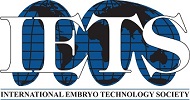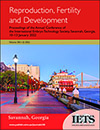
Reproduction, Fertility and Development
Volume 34 Numbers 1 & 2 2022
Special IssueProceedings of the Annual Conference of the International Embryo Technology Society, Savannah, Georgia, 10–13 January 2022
Full Papers and Abstracts for Poster Presentation
RD21249Metabolic exchanges between the oocyte and its environment: focus on lipids
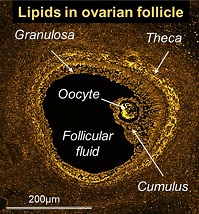
Fat metabolism plays a crucial role in the fertility of dairy cows by affecting oocyte capacity to ovulate and support early embryo development. In ovarian follicles, each cell type specifically metabolises fatty acids to provide the enclosed oocyte with specific lipids for membrane building, energy supply and cell signalling. Integrative analyses of the lipidome, proteome and transcriptome of follicular compartments provides a way to understand lipid exchanges within the follicle, and what constitutes a beneficial environment for oocyte development to improve reproductive technologies in cows.
RD21278Physiological parameters related to oocyte nuclear differentiation for the improvement of IVM/IVF outcomes in women and cattle
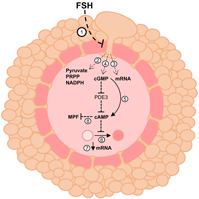
In vitro maturation (IVM) is an inefficient tool applied in assisted reproduction and its improvement shall benefit comfort/safety of IVF patients and livestock productivity. IVM inefficiency results principally from non-physiological culture conditions, although the disrupted mechanisms are not entirely known. Our review suggests a key detrimental impact of supraphysiological FSH activity in current IVM systems on oocyte competence, as well as the possibility to improve outcomes through more physiological systems integrating new in vivo and in vitro strategies.
RD21285Impact of oocyte donor age and breed on in vitro embryo production in cattle, and relationship of dairy and beef embryo recipients on pregnancy and the subsequent performance of offspring: A review
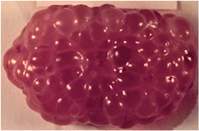
The rate of genetic change in cattle is slow because of long generation intervals. The generation interval in cattle is significantly reduced by the ethical collection of unfertilised eggs (oocytes) from heifer calves and using in vitro fertilisation (IVF) to produce embryos for the next generation. When combined with early genomic selection based on DNA this creates a powerful technology platform to accelerate genetic improvement in cattle to meet industry and consumer needs for optimal productivity with minimal environmental impact.
RD21267Female age and parity in horses: how and why does it matter?
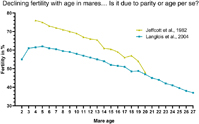
Maternal age and parity are factors to take in consideration for producing offspring in mammals. In equine, mare age and parity are confounding factors that have been shown to influence fertility by impacting reproductive tract and ovaries as well as intra and extra-uterine growth and health of foals. This review is a complete and detailed update of the literature on effects of age and parity on mare reproduction features.
RD21275Role of reproductive fluids and extracellular vesicles in embryo–maternal interaction during early pregnancy in cattle


Coordinated interaction between the gametes/early developing embryo and the maternal reproductive tract is essential for the establishment and maintenance of pregnancy in mammals. Extracellular vesicles can be secreted and received by the bovine embryo as well as by the oviduct and the uterus of the cow suggesting a bidirectional embryo–maternal communication. Combination of in vivo and in vitro models is fundamental to comprehend the dialogue between the embryo and the mother.
RD21265Sperm interaction with the uterine innate immune system: toll-like receptor 2 (TLR2) is a main sensor in cattle
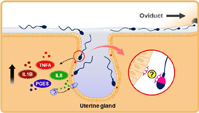
The sperm-induced uterine immune responses are vital to clear the uterus of excess sperm to prepare the endometrium for implantation. Here we discuss the activation of uterine innate immunity by sperm. In cattle, sperm interact with uterine glands via TLR2 activation of sperm and the uterine epithelium to trigger the uterine innate immune responses. These outcomes help to understand how this response supports the roles of the uterus in the early reproductive processes.
RD21265 Abstract | RD21265 Full Text | RD21265PDF (1.7 MB) Open Access Article
RD21282Nurturing the egg: the essential connection between cumulus cells and the oocyte
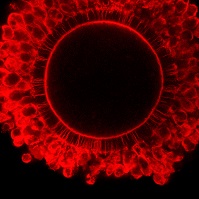
The oocyte is very atypical being the biggest cell and capable of remaining dormant for decades in some species. Due to its peculiar nature, we still know little about it. Here is presented a perspective where neighbouring cells cooperate in nurturing the female gamete to provide its capacity to grow, mature and develop into an early embryo if fertilised. This puts in context the unique cooperation between follicular cells and the gamete. Credit: Image was taken by Dr Angus Macaulay.
RD21282 Abstract | RD21282 Full Text | RD21282PDF (1.5 MB) Open Access Article
RD21276Sperm-borne sncRNAs: potential biomarkers for semen fertility?
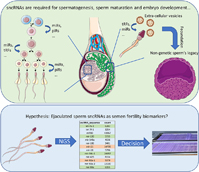
Several biomarkers and quality control procedures have long been proposed to ensure semen fertility, but their predictive values appear too limited and additional biomarkers are still required to diagnose sub-fertility efficiently. In the last decade a crucial role in spermatogenesis and sperm maturation of a variety of small non-coding RNAs (sncRNAs) has been demonstrated, suggesting that sperm sncRNAs could be a source of relevant biomarkers. This review provides a synthetic overview of the current state of knowledge regarding sncRNA as fertility biomarkers.
RD21276 Abstract | RD21276 Full Text | RD21276PDF (2.1 MB) | RD21276Supplementary Material (534 KB) Open Access Article
RD21277Current knowledge and the future potential of extracellular vesicles in mammalian reproduction
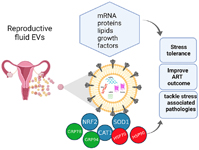
Extracellular vesicles represent nanosized particles present in almost all biological fluids and are known to shuttle bioactive molecules in form of mRNA, miRNA, proteins and lipids during cell to cell communication in reproduction. Those bioactive molecules carried by extracellular vesicles can be indicators of the physiological status of the animal and can induce stress tolerance during oocyte growth and preimplantation embryo development. They can play a significant role in signal communication between the embryo and the maternal environment during pregnancy establishment. The use of extracellular vesicles from reproductive fluids in the current assisted reproductive technologies (ART), mainly in vitro embryo production, can compensate for the missing in vivo components and thereby contribute to the improved efficiency of ART in tackling fertility problems in human and animals.
RD21283Parameters to identify good quality oocytes and embryos in cattle
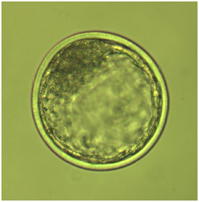
Emerging work has focused on assessing biomarkers in samples of/from oocytes or embryos that can be collected non-invasively and examining whether they predict or reflect pregnancy success. Similarly, automation is very important and also required in IVP labs as numerous parameters have to be recorded at different time points throughout embryo development, to avoid subjective decisions regarding embryo selection and transfer.
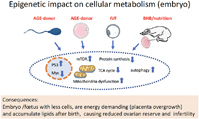
We now know that the parents transmit more than their gene, and their metabolic status in particular can influence not only the functionality of the early embryo but potentially the future phenotype of the offspring. Using transcriptomic and epigenetic molecular analysis in the bovine model, recent research has shown that parent’s age or milking level of at the time of conception generates embryos and offspring’s with a unique metabolic signature. The general common consequence of these situations is an embryo behaving as ‘economy’ mode where translation, cell division and ATP production is reduced, potentially to adapt to the perceived future environment.

This paper describes the ethical context as it applies to biotechnologies and animal use in the field of embryo technologies. Different parts of this discussion represent historical, philosophical, ethical, and technical perspective to inform reproductive biologists and veterinarians on important issues related to animal use.


